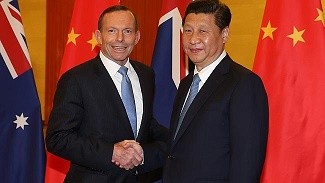China and Australia are set to sign the China-Australia Free Trade Agreement (ChAFTA) on June 17, Wednesday, according to a statement by the China-Australia Chamber of Commerce sent the Global Times.
Gao Hucheng, head of the Ministry of Commerce (MOFCOM), will be visiting Australia this week to finalize the text of the agreement, the Australian news website businesspectator.com.au reported on June 15.
According to the Global Times, the ChAFTA was signed only after 10 years of negotiations, which started in April 2005. The declaration of intent, symbolizing the conclusion of ChAFTA negotiations, was signed in Nov. 2014 during President Xi Jinping's visit to Australia following the G20 summit.
The agreement would enable China to export products to Australia tariff-free, while most Australian products will enjoy duty-free entry to China, MOFCOM said on its website in Nov. 2014.
The ministry said that the two sides have both vowed to open up their service sector and investment to each other, as they also agreed to grant each other the most-favored-nation status and lower the review limit for corporate investment.
Bai Ming, a research fellow at the Chinese Academy of International Trade and Economic Cooperation, said that the free trade agreement would ensure a more meaningful and long-term cooperation between the two countries, which complement each other in resources and industries.
Zhou Hao, an economist at ANZ Banking Group, said that Australia may benefit more from the agreement due to its trade surplus with China, while China will gain more in the investment sector.
The Chinese Academy of International Trade and Economic Cooperation under MOFCOM noted that trade volumes between China and Australia grew from $88.1 billion in 2010 to $136.9 billion in 2014, while data from State Administration of Foreign Exchange showed that Australia had $9.4 billion trade surplus with China in 2014.
In the past two years, China was Australia's largest export market for both goods and services, which account for nearly one-third of the country's total exports and a growing source of foreign investment.
Experts believe that the implementation of ChAFTA would lead to further cooperation between enterprises from both countries.
Australia's top five exports to China from 2013 to 2014 include iron ores and concentrates (AU$57 billion), coal (AU$9.3 billion), gold (AU$8.1 billion), education-related travel services (AU$4.1 billion), and copper (AU$2.1 billion).
China's top five import to Australia include clothing (AU$5.1 billion), telecom equipment and parts (AU$4.9 billion), computers (AU$4.8 billion), furniture and mattresses (AU$2.2 billion), and toys and games (AU$1.8 billion).




























